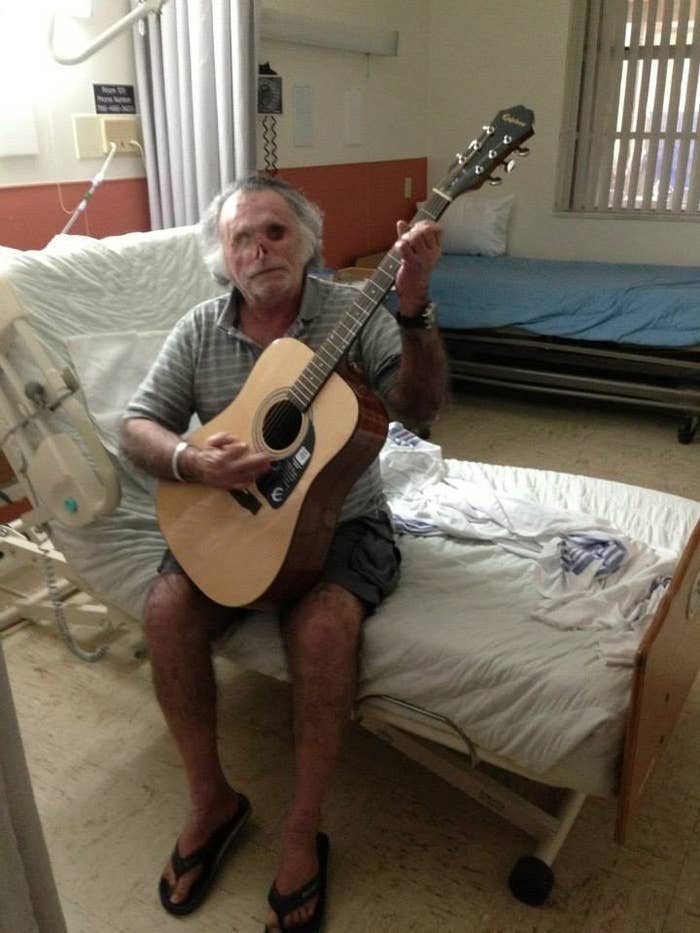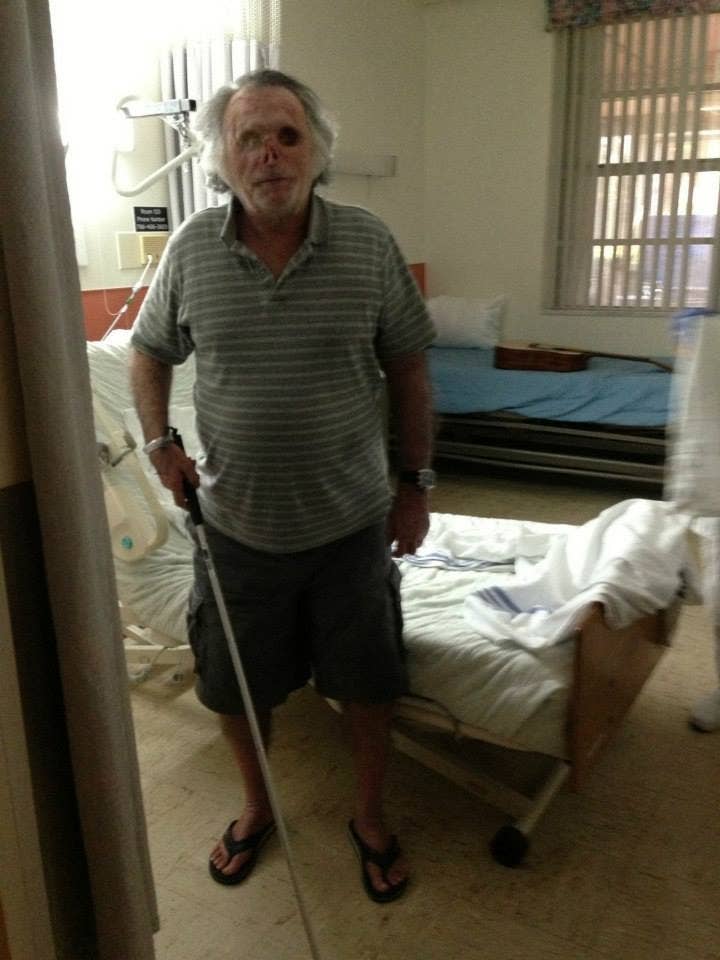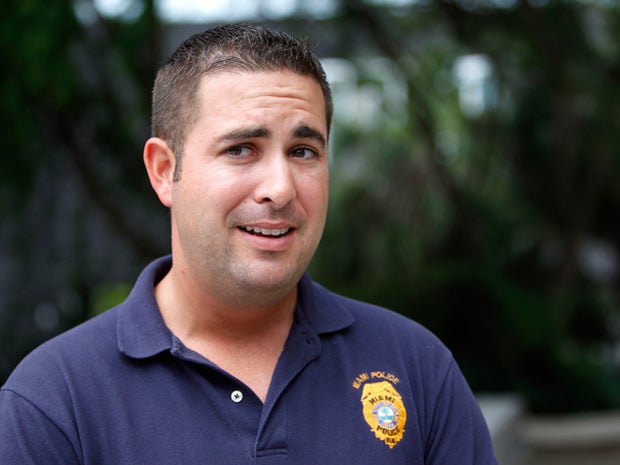Would YOU Live in a City Made of BONE ? ?
The cities of today are built with concrete and steel – but some Cambridge researchers think that the cities of the future need to go back to nature if they are to support an ever-expanding population, while keeping carbon emissions under control.
“The material properties of bone and wood are very similar,” says Oyen. “Just because we can make all of our buildings out of concrete and steel doesn’t mean we should. But it will require big change.”
https://www.cam.ac.uk/research/features/would-you-live-in-a-city-made-of-bone
Concrete and steel are responsible for as much as a tenth of worldwide carbon emissions. Before they ever reach a construction site, both steel and concrete must be processed at very high temperatures – which takes a lot of energy. And yet, our cities are completely dependent on these two “unsustainable materials”.
Just think NATURAL construction materials will reduce your carbon footprint. People assume that air travel is a huge contributor to carbon emissions,” says bioengineer Dr Michelle Oyen of Cambridge’s Department of Engineering. “But the truth is, while the emissions caused by air travel are significant, far more are caused by the production of concrete and steel, which of course is what most cities are built from.”
So what does that mean for cities of the future, as more and more of us live in urban areas? How can we continue to build while reducing carbon emissions?Whereas some researchers are investigating ways of producing steel and concrete in more energy-efficient ways, or finding ways of using less, Oyen would rather turn the tables completely, and create new building materials that are strong, sustainable and take their inspiration from nature.“What we’re trying to do is to rethink the way that we make things,” says Oyen. “Engineers tend to throw energy at problems, whereas nature throws information at problems – they fundamentally do things differently.”Oyen works in the field of biomimetics – literally ‘copying life’. In her lab, with funding support from the US Army Corps of Engineers, she constructs small samples of artificial bone and eggshell, which could be used as medical implants, or even be scaled up and used as low-carbon building materials.
Like the real things, artificial bone and eggshell are composites of proteins and minerals. In bone, the proportions of protein and mineral are roughly equal – the mineral gives bone stiffness and hardness, while the protein gives it toughness or resistance to fracture. While bones can break, it is relatively rare, and they have the benefit of being self-healing – another feature that engineers are trying to bring to biomimetic materials.In eggshell, the ratios are different: about 95% mineral to 5% protein, but even this small amount of protein makes eggshell remarkably tough considering how thin it is.When making the artificial bone and eggshell, the mineral components are ‘templated’ directly onto collagen, which is the most abundant protein in the animal world. “One of the interesting things is that the minerals that make up bone deposit along the collagen, and eggshell deposits outwards from the collagen, perpendicular to it,” says Oyen. “So it might even be the case that these two composites could be combined to make a lattice-type structure, which would be even stronger – there’s some interesting science there that we’d like to look into.”In her lab, Oyen and her team have been making samples of artificial eggshell and bone via a process that could be easily scaled up – and since the process takes place at room temperature, the samples take very little energy to produce. But it may be some time before we’re living in bone and eggshell houses.For one, the collagen that Oyen needs to make these materials comes from natural (meaning animal) sources. One of the things she’s currently investigating is whether a non-animal-derived or even synthetic protein or polymer could be used instead of natural collagen.“Another issue is the construction industry is a very conservative one,” Oyen says. “All of our existing building standards have been designed with concrete and steel in mind. Constructing buildings out of entirely new materials would mean completely rethinking the whole industry. But if you want to do something really transformative to bring down carbon emissions, then I think that’s what we have to do. If we’re going to make a real change, a major rethink is what has to happen.”Dr Michael Ramage from the Department of Architecture is another Cambridge researcher who believes we need to expand our use of natural materials in buildings. Ramage has several ongoing research projects that are looking into the use of wood – one of the oldest building materials we have –
for tall buildings.
_______________________________________________________
As economic and political power shifts worldwide, ‘new champions’ are emerging regionally that force us to rethink solution s to global and industry challenges. How can old and new champions collaborate in a highly competitive global environment? Where are the natural areas of collaboration? World Economic Forum. Davos. 26 January 2008 Introduction A powerful new phenomenon is reshaping th e dynamics of the global economy: the stunning rise of aggressive, globe-conquering multinational companies from emerging economies. Large-scale firms from countries in Asia and Latin America have finally come out of the shadows and are positi oning themselves globally. In 2006, Boston Consulting Group described this phenomenon as “a revolution in global business.” 1 The same year Business Week magazine, followed by Newsweek in 2007, published cover stories on new corpor ate giants from emerging economies. 2 The Economist , for its part, made the following observation in 2007: “While globalization has opened new markets to rich-world companies, it has also given birth to a pack of fast-moving, sharp- toothed new multinationals that is emerging from the poor world.” 3 The emergence of regionally-based “multi-Latinas” – by definition, firms that leveraged domestic positions to expand their operations throughout Latin America — first attracted attention in the 1990s. Today we are witnessing a new phase in which some Latin American firms are pursuing more aggressive ex pansions strategies on a global scale. Renewed interest in the subject is backed up by data. América Economía reported in 2007 that 334 of the top 500 Latin American corporatio ns had revenues in excess of US$1-billion. 4 At the same time, the Economic Commission for Latin America and the Caribbean (ECLAC) observed that outward flows of foreig n direct investment (FDI) from Latin America 1 Aguiar, M.; Bhattacharya, A.; Bradtke, T.; Cotte, P.; Dertnig, S.; Meyer, M.; Michael, DC; Sirkin, H. The New Global Challengers. Boston Consulting Group, May 2006. 2 “New Giants: Why the World’s Hottest, Richest Companies are Rising out of Poor Countries”, Newsweek , 8 October 2007. 3 “Globalisation’s Offspring”, The Economist , 4 April 2007. 4 Aldunate, F and Rodrigo Díaz “Bigger than Ever”, América Econom í a , September 2007.
____________________________________________________
The following may be mentioned in particular among the extracts of animal blood which are suitable:the globules, i.e. all the elements constituted by the red blood corpuscles, the white blood corpuscles and the thrombocytes, this resulting from the elimination of the plasma;the red blood corpuscles, andthe haemoglobin which is the colouring matter of the red corpuscles.It has been ascertained that, in the blood, it is mainly the red blood corpuscles and the haemoglobin which have the sought after air entraining properties. Therefore, for economical reasons, whole blood or an extract of blood which is more or less rich in red blood corpuscles or haemoglobin may preferably be used, depending on the costs of treating blood.To facilitate the conservation and storage, the animal blood or extract of animal blood are advantageously brough into powder form either by drying, freeze drying or by applying any other method known per se.The preferred use of blood according to the invention for obtaining a lightened material consists in associating the blood, the globules, red blood corpuscles or haemoglobin with at least one other colloid.The process of preparation, according to the invention, of a lightened material is characterised in that at least one air entraining colloid chosen from whole blood, globules, red blood corpuscles and haemoglobin is associated with the construction element chosen from cements, mortars and concretes.According to a preferred embodiment, the process for preparing a mortar or lightened concrete consists in associating, with stirring and in the presence of mixing water:(a) a mixture of cement and sand, and(b) at least one air-entraining colloid in powder form chosen from whole blood, globules, red blood corpuscles and haemoglobin,the quantity of air entraining haemoglobin (b) being advantageously comprised between 0.1 and 1% by weight with respect to the weight of the cement contained in mixture (a).Stirring is one of the essential elements according to the invention. The association, comprising water, the mixture (a), the air entraining colloid (b) and, if necessary, the colloid (c) which will be mentioned hereinbelow, is obtained by means of a mixer working between 100 and 600 r.p.m. Below 100 r.p.m., an insufficient quantity of air is incorporated. The mixer will preferably work at 200 r.p.m., the duration of mixing generally being from 3 to 10 mins.In the mixture (a), the cement/sand mass ratio may in particular be between 0.3 and 1.5. Of course, light aggregates graded between 0.1 and 25 mm may be added to the cement/sand mixture. These light aggregates may be expanded schist, polystryrene balls, expanded glass, vermiculite, perlite or mica.To prepare a light colloidal concrete comprising a very stable network of spherical micro air-bubbles, whose diameter is between 1μ and 1 mm, having a good mechanical resistance and a low density (for example a density of 0.8 to 1.3 kg/dm3after 28 days), the recommended process consists in associating the mixture (a) of cement and sand with at least one air entraining colloid (b) and at least one other colloid (c). The quantity of colloid (c) is then advantageously between 0.025 and 1% by weight with respect to the weight of the cement contained in the mixture (a).The colloids (c) which may be used according to the invention, may be constituted, in particular, by cellulosic derivatives, such as degraded starch, esters and ethers of cellulose, alginic derivatives, derivatives of silane and polyalkyleneoxides (e.g. those which contain from 7 to 22 units alkyleneoxide per molecule) and mixtures thereof. The preferred colloids (c) according to the invention are hydroxyethylcellulose, carboxymethylcellulose, hydroxypropylmethylcellulose and polyethyleneoxides, the most advantageous being the polyethyleneoxides as they act not only as colloids but also as foaming agents and thus make it possible to use, if necessary, a quantity of product (b) close to the lower limit given hereinabove. 0.1 to 5% by weight of polyethyleneoxide with respect to the weight of the cement of mixture (a) may advantageously be used.The association of (a) and (b) and possibly (c) is effected at the moment of mixing with mixing water. According to a similar technique, ready-mixed dry light mortars, may be prepared. The water/cement mass ratio is between 0.35 and 0.45.Other advantages and features of the invention will be more readily understood on reading the following examples of light colloidal concrete. In particular in Example 1, the colloids (c) used were hydroxyethylcellulose (marketed under the name of “Natrosol” by Hercules-France), carboxymethylcellulose (marketed under the name of “Blanose” by Novacel) and hydroxypropylmethylcellulose (marketed under the name of “Methocel” by Dow Chemical; two varieties of hydroxypropylmethylcellulose designated by Methocel No. 1 and Methocel No. 2 were used). In these Examples, the percentages of air entraining colloid and of colloid are expressed by weight with respect to the weight of the cement contained in mixture (a).EXAMPLE 1A light colloidal concrete is prepared by using:a commercially available cement (cement CPA 400),a silico-calcareous sand graded no higher than 0.8 mm (the cement/sand mass ratio being equal to 1),whole blood powder of animal origin, a colloid, andmixing water in variable proportions.The various constituents are mixed by means of a mixer working between 100 and 600 r.p.m.The results obtained after 2, 7 and 28 days shown in Table I hereinbelow, in which:W/C represents the water/cement mass ratio,d represents the density of the materialTB represents the tensile strength in bending (in kg/cm2),andC represents the simple compressive strength (in kg/cm2) TB and C being determined after conservation in air in the presence of humidity (20° C.; 50% HR).By proceeding as indicated in the Example given hereinabove, it is possible 1) to incorporate a filler, particularly a calcareous filler, or 2) to replace the sand or a part thereof by a suitable quantity of light aggregates such as for example polystyrene, expanded slag, vermiculite, perlite and expanded schist.Generally, by playing on the percentage of blood powder or of powder of blood extract containing haemoglobin, on the percentages of colloid and on the modi operandi, in the proportions given hereinabove, the density of the hardened colloidal concrete may be varied from 0.5 to 1.8 kg/dm3 with, correlatively, a simple compressive strength of 5 to 350 kg/cm2.EXAMPLE 2A light colloidal concrete is prepared by mixing, for 4 mins. at 200 r.p.m., a composition comprising water, a mixture of 100 kg of sand (graded no higher than 0.2 mm) and of 100 kg cement (CMP 400), 2 kg of blood extract, 0.6 kg of a cellulosic colloid (carboxymethylcellulose) and 0.3 kg of polyethyleneoxide with a view to comparing three products obtained from blood, namely: whole blood powder, powder of red blood corpuscles and powder of ox plasma, the latter not containing haemoglobin, the water/cement mass ratio (W/X) being 0.42.The density (d) of the material thus obtained as well as the TB and C strengths are determined after 7 and 28 days, as defined in Example 1. The results given in Table II show that the powders containing haemoglobin (whole blood powder and powder of red blood corpuscles) lead to lower densities.EXAMPLE 3A light colloidal mortar is prepared by mixing, for 4 mins. by means of a mixer working at 200 r.p.m., water, cement (CPA 400), sand graded no higher than 0.1 mm and a mixture of colloids (hydroxyethylcellulose and whole blood powder in a mass ratio 0.3:1), the water/cement (W/C) mass ratio being 0.42.For the material obtained at each test, the apparent density is measured (in kg/m3) as well as the TB and C strengths, after 7 and 28 days (in kg/cm2), the heat conductivity when dry (in W/m2 ° C.) and shrinkage after 28 days. The results are shown in Table III hereinbelow.When fresh, the light colloidal mortar obtained according to each test of Example 3 is fat adhering well to the support. It can easily be pumped and is projectable with the mortar-gun. The vibrations, pumping and projection do not destroy the micro-air bubbles.The setting time of the light colloidal mortar is slightly extended, this giving the material a longer application time, but is is possible to accelerate it by means of an accelerator known per se.The heat shrinkage of this material is of the same order of magnitude as that of a conventional concrete (10 μ/m/° C.). Moreover, as shown by the result of Table III hereinbelow, the compressive strengths obtained after 28 days of conservation in damp (20° C.; 50% H.R.) are:50 kg/cm2 for the economical mixture (low colloid content) of light colloidal mortar of density 1100 kg/m3, and212 kg/cm2 for the light colloidal mortar of density 1500 kg/m3.The ratio TB/C varies between 0.60 and 0.30 according to the density, instead of 0.15 to 0.20 for conventional concretes. The substantial increase of this ratio translates a considerable reduction in the fragility of the material and a great faculty of accommodation under the pulling forces.The hydraulic shrinkage after setting of the light colloidal mortar is greater than that of a concrete in view of the high content of fine elements, but, what is important in a lining, is the fissurability. The modulus of elasticity of the light colloidal mortar according to the invention is of the order of 60 000 kg/cm2, or about 1/5 of that of a conventional concrete, in other words, with equal stresses, the mortar according to the invention deforms five times more than a conventional concrete. It is this deformability which protects this light material against cracks. The high resistance to cracking and the plasticity are due to the presence of numerous air bubbles which stop the possible micro-cracks, similarly to a hole which is made at the end of a crack in a window to stop propagation thereof.The light colloidal mortar is only slightly capillary and is perfectly resistant to the freezing-thaw cycles. Finally, the dimensional variations (swelling/shrinking) during the drying/humidification cycles are substantially the same as those of a conventional concrete.In view of these properties, the light colloidal mortar according to the invention is perfectly usable in the domains of single-layer linings and outer insulating linings.
CEMEX Strengthens Supply Chain to Support U.S. Operations in Their Efforts to Address Cement ShortageFebruary 02, 2021 05:30 PM Eastern Standard TimeMONTERREY, Mexico–(BUSINESS WIRE)–CEMEX, S.A.B. de C.V. (“CEMEX”) (NYSE: CX) announced today it is optimizing its supply chain to meet shortages experienced throughout the western U.S. The optimization includes a kiln’s recommissioning at a cement plant in northwest Mexico. This announcement leverages CEMEX’s unique supply chain synergies in North America to alleviate cement shortages and project delays in California, Arizona, and Nevada.@CEMEX optimizes its supply chain to meet shortages in the western US. The optimization includes a kiln’s recommissioning at a cement plant in northwest Mexico
CEMEX is investing approximately U.S. $15 million to recommission a kiln with a production capacity of about 1 million tons of cement annually at the CPN cement plant in Hermosillo, Sonora, Mexico. This investment should create more than 130 jobs in Mexico. Using its extensive distribution network in the region, CEMEX seeks to consistently supply Portland cement through its terminals in California, Arizona, and Nevada.“Many cement customers in California, Arizona and Nevada have been impacted by supply constraints this past year,” said CEMEX USA Executive Vice President—Cement Commercial Joel Galassini. “The decision to recommission this kiln was made with our customers top of mind, to give them reliable access through a local supply chain to help meet their growing needs. Our unique network of production facilities in this region allows us to make these types of investments that will have a meaningful impact on meeting our customers’ needs.”Currently, CEMEX supplies more than three million tons of cement each year across California, Arizona, and Nevada from its Victorville, California, cement plant, and sea-borne imports. The kiln restart at the CPN plant in Mexico, increased efficiencies at the Victorville cement plant in California, and other supply chain modifications are planned to help the company deliver hundreds of thousands of additional tons of cement through its local supply chain.“With the kiln going back into operation, we are leveraging our strong network and local assets at CEMEX to help meet the increased construction needs in the region,” said CEMEX USA Regional President—Arizona Region David Nabavi. “We strive to provide our customers a superior customer experience and deliver the materials they need when they need them.”_________________________________________________________________________ Board of Directors – CEMEX
He has been CEMEX, S.A.B. de C.V.’s Chief Executive Officer since May 15, … as well as member of the Advisory Committee of the David Rockefeller Center for … Sergio MenéndezPresident of CEMEX Europe, Middle East, Africa & AsiaSergio Menéndez joined CEMEX in 1993. He has held several executive positions, including Director of Planning and Logistics in Asia, Corporate Director of Commercial Development, President of CEMEX Philippines, Vice President of Strategic Planning for Europe, Middle East, Africa and Asia region, President of CEMEX Egypt, Vice President of Infrastructure Segment and Government Sales in Mexico, and more recently, as Vice President of Distribution Segment Sales in Mexico. Sergio holds a BS in Industrial Engineering from Tecnológico de Monterrey, and an MBA from Stanford University.Luis HernándezExecutive Vice President of Digital and Organization DevelopmentLuis Hernández joined CEMEX in 1996 and has held senior management positions in Strategic Planning and Human Resources. In his current position, he heads the areas of Organization and Human Resources, Information Technology, Digital Innovation, as well as CEMEX Ventures and Neoris. Luis holds a BS in Civil Engineering from Tecnológico de Monterrey, and a master’s degree in Civil Engineering and an MBA, both from the University of Texas at Austin.José Antonio GonzálezExecutive Vice President of Strategic Planning and Business DevelopmentJosé Antonio González joined CEMEX in 1998, and has held several executive positions in the Finance, Strategic Planning, and Corporate Communications and Public Affairs areas, including most recently, Executive Vice President of Finance and Administration (CFO). José Antonio holds a BS in Industrial Engineering from Tecnológico de Monterrey, and an MBA from Stanford University.Jesús GonzálezPresident CEMEX South, Central America and the CaribbeanJesús González joined CEMEX in 1998, and has held several senior positions, including Corporate Director of Strategic Planning, Vice President of Strategic Planning in CEMEX USA, President of CEMEX Central America, President of CEMEX UK, and more recently Executive Vice President of Sustainability and Operations Development. He holds a MSc in Naval Engineering from the Polytechnic University of Madrid and an MBA from IESE – University of Navarra, Barcelona.Mauricio DoehnerExecutive Vice President of Corporate Affairs, Enterprise Risk Management and Social ImpactMauricio Doehner joined CEMEX in 1996 and has held several executive positions in Strategic Planning and Enterprise Risk Management at CEMEX Europe, Asia, the Middle East, South America, and Mexico. He has also worked in the public sector at the Mexican Presidency. Mauricio holds a BA in Economics from Tecnológico de Monterrey, an MBA from IESE/IPADE, and a Master in Public Administration from Harvard University.Maher Al-HaffarExecutive Vice President of Finance and Administration (CFO)Maher Al-Haffar joined CEMEX in 2000, and has held several executive positions, including Managing Director of Finance, Head of Investor Relations, and most recently, Executive Vice President of Investor Relations, Corporate Communications and Public Affairs. He is also a member of the NYSE Advisory Board. Before joining CEMEX, Maher spent nineteen years with Citicorp Securities Inc. and with Santander Investment Securities, as an investment banker and capital markets professional. Maher holds a BS in Economics from the University of Texas, and a master’s degree in International Relations and Finance from Georgetown University.Fernando A. GonzálezChief Executive OfficerSince joining CEMEX in 1989, Fernando A. González has held several senior management positions, including Corporate Vice President of Strategic Planning, head of operations in Venezuela, President of CEMEX Asia, President of the CEMEX South America and the Caribbean region, President of the CEMEX Europe, Middle East, Africa, Asia and Australia region, and Executive Vice President of Strategic Planning, Finance and Administration (CFO). Fernando was appointed Chief Executive Officer in 2014. He also serves in the Board of Directors of Grupo Cementos de Chihuahua, Axtel, and TecMilenio University. He earned his BA in Administration and an MBA, both from Tecnológico de Monterrey.Sergio MenéndezPresident of CEMEX Europe, Middle East, Africa & AsiaSergio Menéndez joined CEMEX in 1993. He has held several executive positions, including Director of Planning and Logistics in Asia, Corporate Director of Commercial Development, President of CEMEX Philippines, Vice President of Strategic Planning for Europe, Middle East, Africa and Asia region, President of CEMEX Egypt, Vice President of Infrastructure Segment and Government Sales in Mexico, and more recently, as Vice President of Distribution Segment Sales in Mexico. Sergio holds a BS in Industrial Engineering from Tecnológico de Monterrey, and an MBA from Stanford University.Jaime MuguiroPresident of CEMEX USAJaime Muguiro joined CEMEX in 1996, and has held several executive positions in the Strategic Planning, Business Development, Ready-Mix Concrete, Aggregates, and Human Resources areas, and also headed CEMEX operations in Egypt, our operations in the Mediterranean region, and more recently, our operations in the South, Central America, and the Caribbean region. He holds a BA in Management from San Pablo CEU University, Spain, a Law degree from the Universidad Complutense of Madrid, and an MBA from the Massachusetts Institute of Technology.Ricardo NayaPresident CEMEX MexicoRicardo Naya joined CEMEX in 1996. He has held several executive positions, including Vice President of Strategic Planning for South, Central America and the Caribbean region, Vice President of Strategic Planning for Europe, Middle East, Africa and Asia region, President of CEMEX Poland and Czech Republic, Vice President of Commercial and Marketing in Mexico, Vice President of Distribution Segment Sales in Mexico, and more recently, as President of CEMEX Colombia. Ricardo holds a BA in Economics from Tecnológico de Monterrey, and an MBA from the Massachusetts Institute of Technology.Louisa (Lucy) P. RodriguezExecutive Vice President of Investor Relations, Corporate Communications and Public AffairsMs. Rodriguez has over twenty five years’ experience in international finance and capital markets. She joined CEMEX in 2006 in the Investor Relations Department where she has been involved in more than $15 billion of equity and fixed income fundraising efforts. She also represents the company in the international financial community. Prior to CEMEX, Ms. Rodriguez spent 15 years at Citibank where she worked in capital markets origination, debt syndicate and securitization financing for Emerging Market issuers. In her early career, she worked for KPMG in their Audit Department. Ms. Rodriguez holds a B.A. in Economics from Trinity College (Hartford Ct.), an MBA from New York University and a Masters from Columbia University School of International and Public Affairs. She has been a Certified Public Accountant.Juan RomeroExecutive Vice President Sustainability, Commercial and Operations DevelopmentJuan Romero joined CEMEX in 1989, and has held several senior positions, including head of operations in Colombia and Mexico, President of the CEMEX South America and the Caribbean region, President of the CEMEX Europe, Middle East, Africa and Asia region, and most recently, President of CEMEX Mexico. Currently, as part of his role, he also leads the Digital Marketing function. Juan Romero holds BA and BS degrees in Law, Economics and Management from the University of Comillas in Spain._______________________________________________________Average Cemex Inc. Salary – PayScaleMar 14, 2021 — The average salary for Cemex, Inc. employees is $75939 per year. Visit PayScale to research Cemex, Inc. salaries, bonuses, reviews, benefits, …
Blood and Bones – Where Have the Missing People and Animals GONE?IN THE CEMEX |


















![items.[0].image.alt](https://ewscripps.brightspotcdn.com/dims4/default/91c10e7/2147483647/strip/true/crop/3000x1688+0+198/resize/1280x720!/quality/90/?url=http%3A%2F%2Fewscripps-brightspot.s3.amazonaws.com%2F96%2Ff2%2F60ee58e14cfaa8104fa9d138462b%2Fap20260438424373.jpg)

